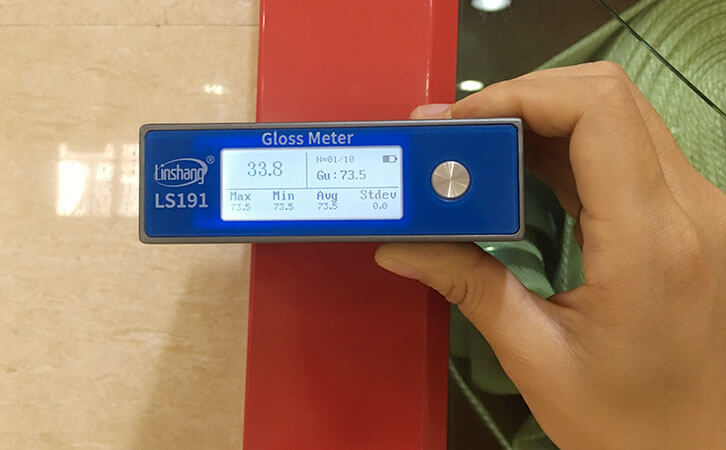Things You Need To Know About Gloss and why to measure gloss?
Different industries often use instruments that measure at different angles. It is mainly used for the determination of the white paper gloss. The specular gloss method should be used for the measurement of high gloss paper (more than 75% gloss). The surface roughness of plastic products can be measured with a surface gloss meter and can be quantitatively expressed. At the same time, if the surface of these products is subjected to certain abrasion, it can also be characterized by the change in gloss before and after abrasion.
1. What is gloss?
Gloss is a physical quantity that evaluates the ability of a material's surface to reflect light under a set of several specified conditions. At the same time, it expresses the reflective properties with direction selection. It refers to the ability of the object surface to produce specularly reflected light. The gloss refers to "mirror glossiness". The so-called specular reflection refers to a reflection phenomenon where the reflection angle is equal to the incident angle. In the actual glossiness measurement process, if there is no uniform reference standard, the object cannot be expressed as gloss.
A commonly used gloss meter is a standard board to achieve relative measurement of the object surface gloss. The highly polished black glass with a refractive index np = 1.567 is used as a reference standard. Assuming that the surface is in an ideal polished state, the plane can reflect the speed of natural light specularly and define the gloss value at this time as 100.0 gloss units. Then when measuring the surface gloss of other objects, it is usually expressed by the reflectance of the sample in the specular (orthogonal) direction relative to the standard surface multiplied by 100GU, that is, G = 100R / R. But in fact, the standard board is not an ideal polished state.Some materials have higher reflectance than the standard board, so sometimes when measuring high-gloss objects, the measurement result will be greater than 100GU, which indicates that the surface gloss of the object is higher than that of highly polished black glass.
2. Why do we test the gloss?
The gloss of the object surface is affected by many factors, such as: smoothness after grinding and polishing, the number and type of coatings used and the quality of the substrate. Gloss is very important for the product. Non-stop inspection of individual products or different batches of products need to be measured of gloss. Gloss can also be used to measure surface quality. For example: the gloss of the surface coating is reduced, indicating that the surface may need to be reprocessed; other factors that cause the gloss value to be reduced include: lower viscosity of the coating, or the number of surface coating. The shortcomings are precisely these factors. From automotive, printing, furniture to food, pharmaceuticals and electronic products, many manufacturing industries need to perform gloss testing on products.
3. Application of surface gloss meter
Main application of surface gloss meter: Surface gloss measurement of paint, coating, decoration, plastic materials, ceramic products, stone products, bamboo and wood products, leather products, film paper, printing inks, car maintenance, molding tools, metal coatings and many other fields.
Therefore, when we buy some metal objects or other plastic products, we need to test whether there is a difference in glossiness. It is recommended to use a surface gloss meter made by Linshang Technology Co., Ltd., which can efficiently and simply test the gloss parameters.
